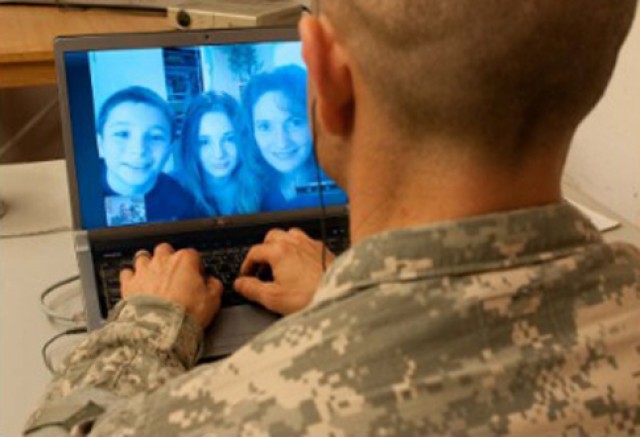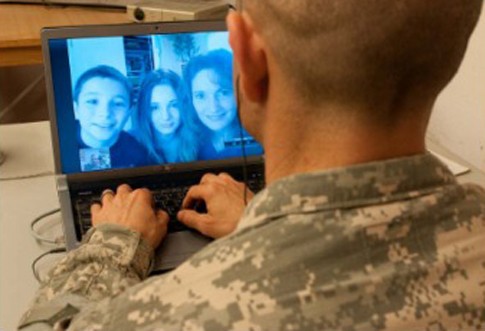PICATINNY ARSENAL, N.J. -- If you're reading this article, chances are you're one of the 500 million people in the world who have a Facebook account. Or perhaps you're one of the 75 million who use Twitter. Likely, you are one of 924 million who watch videos on You Tube. Or perhaps you've browsed one of three billion photos uploaded to Flickr.
Let's face it - social media plays an active role in our lives. Research shows that more than 80 percent of Americans use social media tools and websites on a monthly basis. Social networking sites like Facebook and Twitter are now the number one activity people do on the Web. Further, more than 75 percent of all active internet users regularly read blogs, according to Technorati, a leading blog search engine and directory.
Social media is changing the way we communicate. Just think - it took television 13 years to finally reach 50 million people. It took Facebook only two years.
All across the Army and the Department of Defense, organizations and units are actively engaging audiences through the online world of social media. While incorporating social media into the military began a few years ago, there has been a recent push from the Army and DoD to establish policy, guidance and education on social media to the workforce.
Representatives from Picatinny Arsenal's Public Affairs Office got a taste of the Army's social media guidance and best practices at the Army Materiel Command Social Media Conference, hosted at Redstone Arsenal Feb. 2. The guest speaker at the conference was Maj. Juanita Chang, Director of the Online and Social Media Division, Office of the Chief of Public Affairs.
"Social media is not a fad - it is here to stay," Chang said, referencing the U.S. Army Facebook page her office manages, which has more than 600,000 fans. "Social media helps the Army better inform the American Public about their Army, bringing the nation closer to the Soldiers, Families and Civilians who serve them."
"It has changed the way we as a culture communicate. It lets us reach larger audiences faster and more effectively. It can connect us almost instantaneously within a global network," she said. "Our primary concern is enforcing the rules of Operations Security that apply in all things that we do - it is no different in social media. We just need to remind those using it that the same rules of OPSEC apply here.
SOCIAL MEDIA HANDBOOK PROVIDES GUIDANCE
One of the main topics of discussion was the 2011 Army Social Media Handbook, released by Chang's team in January. Featured on popular sites such as Mashable, a leading social media news blog, the Army's Social Media Handbook has received considerable attention in the social media community.
The handbook covers guidance for not only social media page administrators and public affairs specialists, but it also includes general social media, online and Operations Security guidance for military members, civilians and families. It also includes DoD policy and guidance, such as DoD Directive-Type Memorandum 09-026, "Responsible and Effective Use of Internet-based Capabilities."
Issued on Feb. 25, 2010, this directive acknowledges "that Internet-based capabilities are integral to operations across the Department of Defense" and outlines how the NIPRNET should be configured to allow access to Internet-based capabilities across all DoD components.
All branches of the U.S. military are using social media at different levels, but this directive clearly indicates that use of social media in the Department of Defense is authorized.
GEOTAGGING - DON'T DO IT!
Another hot topic is geotagging, which is the process of adding geographical identification to photographs, video, websites and SMS messages. It is the equivalent of adding a 10-digit grid coordinate to everything posted on the Internet.
Geotags are automatically embedded in pictures taken with smart phones. Many people are unaware of the fact that the photos they take with their smart phones and load to the Internet have been geotagged.
Photos have used geotagging for quite some time. Certain formats, like the JPEG format, allow for geographical information to be embedded within the image and then read by picture viewers. This shows the exact location where the picture was taken. Most modern digital cameras do not automatically add geolocation metadata to pictures, but that is not always true.
Additionally, photo sharing sites give people options to tag locations on their photos, even if their camera doesn't have a GPS function.
Put all this together and it's no wonder that geotagging can be an operations security risk for our military.
Today, more than ever, it is vitally important that Army leaders, Soldiers, civilians and family members understand what kind of data they are releasing into the public domain and what they can do to protect themselves.
"Our adversaries are trolling social networks, blogs and forums, trying to find sensitive information they can use about our military goals and objectives," said Sgt. Maj. of the Army Kenneth O. Preston in a statement released in the 2011 Army Social Media Handbook. "Therefore, it is imperative that all Soldiers and Family members understand the importance of practicing good operations security measures."
PICATINNY SOCIAL MEDIA
Are you one of the1,600-plus fans following Picatinny Arsenal on Facebook' The Picatinny Public Affairs Office manages and maintains four social media sites for the the arsenal. The Public Affairs Office invites you to ask questions, leave comments and interact via our social media sites. (See links in navigation bar above right)


Social Sharing